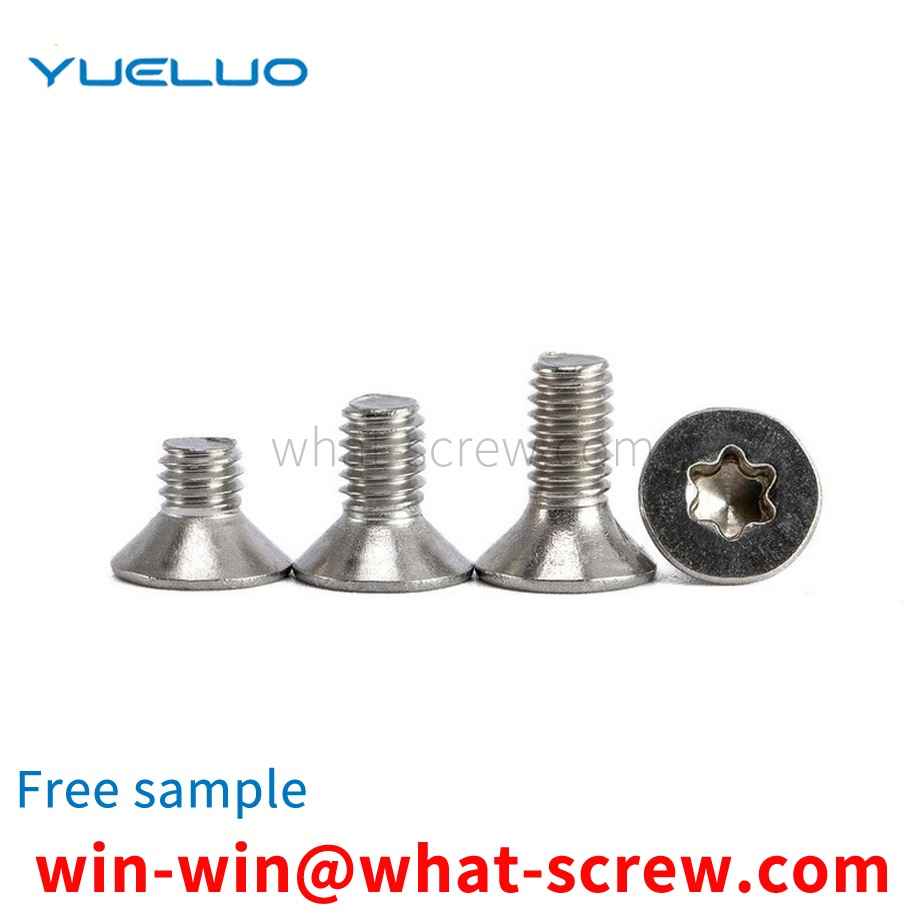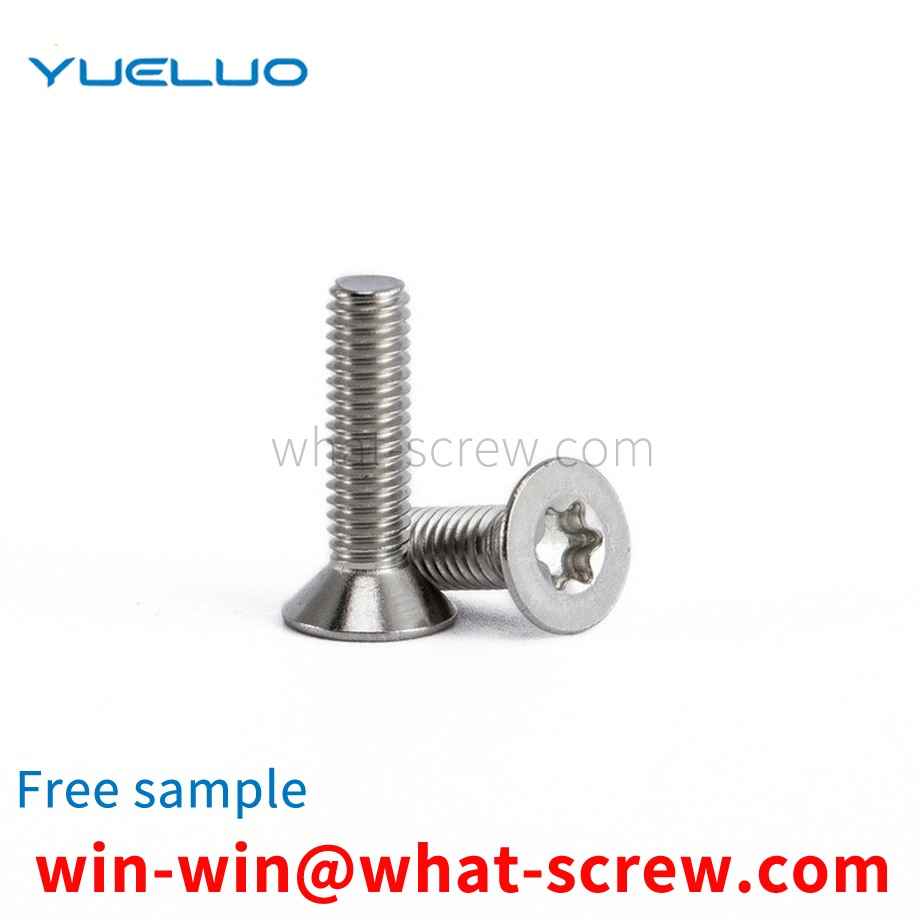Generally, the bolts or nuts used to press workpieces or fixtures in the T-slot of the machine tool table are made into square or rectangle. Things are very inconvenient.
There are generally two, one is iron, that is, carbon steel. One is stainless steel, and of course there are copper and aluminum nuts, but these are rarely used. Copper is more or less useful, and nuts like aluminum are rarely used.
Stainless steel screws are classified into austenitic stainless steel, ferritic stainless steel, martensitic stainless steel, and precipitation hardening stainless steel. The selection of stainless steel screws is also based on principles. Where to start, let you choose the stainless steel screws you need. After comprehensive and comprehensive consideration of these five aspects, the grades, varieties, specifications and material standards of stainless steel screws are finally determined. Austenitic stainless steel: the most basic alloying elements of austenitic stainless steel are chromium and nickel. The grade is a chromium-nickel austenitic stainless steel with a chromium content of about 18% and a nickel content of about 8%, often called 18-8 stainless steel. The element ratio of chromium and nickel basically ensures that the structure of the steel is stable austenitic ferritic stainless steel: 430 type ordinary chromium steel, its corrosion resistance and heat resistance are better than 410 type, magnetic, but it It cannot be strengthened by heat treatment, and is suitable for stainless steel screws with slightly higher corrosion resistance and heat resistance and general strength requirements. Martensitic stainless steel: Type 410 and 416 can be strengthened by heat treatment, with a hardness of 35 to 45HRC, and good machinability. They are used for general-purpose heat-resistant and corrosion-resistant stainless steel screws. Type 416 has a slightly higher sulfur content and is a free-cutting stainless steel. Type 420, sulfur content? R0.15%, improved mechanical properties, can be strengthened by heat treatment, maximum hardness value of 53 ~ 58HRC, used for stainless steel screws requiring higher strength. Precipitation hardening stainless steel: 17-4PH, PH15-7Mo, they can get higher strength than the usual 18-8 type stainless steel, so they are used for high-strength, corrosion-resistant stainless steel stainless steel screws. A-286, a non-standard stainless steel, has higher corrosion resistance than commonly used Type 18-8 stainless steels, as well as good mechanical properties at elevated temperatures. Used as high-strength, heat-resistant, corrosion-resistant stainless steel screws, can be used to 650 ~ 700 ℃. Austenitic stainless steel: The commonly used models are 302, 303, 304, and 305, which are the so-called 18-8 austenitic stainless steels. Both corrosion resistance and mechanical properties are similar. The starting point of selection is the production process method of stainless steel screws, and the method depends on the size and shape of stainless steel screws, and also depends on the quantity of production. Type 302 is used for machined screws and self-tapping bolts. Type 303 In order to improve machinability, Type 303 stainless steel is added with a small amount of sulfur and is used to machine nuts from bar stock. Type 304 is suitable for hot heading stainless steel screws, such as longer gauge bolts, large diameter bolts, which may be beyond the scope of the cold heading process. Type 305 is suitable for cold heading processing of stainless steel screws, such as cold formed nuts, hex bolts. Type 309 and Type 310, their Cr content and Ni content are higher than 18-8 type stainless steel, suitable for stainless steel screws working at high temperature. Types 316 and 317, both of which contain the alloying element Mo, have higher high temperature strength and corrosion resistance than 18-8 type stainless steel. Type 321 and Type 347, Type 321 contains a relatively stable alloying element Ti, Type 347 contains Nb, which improves the intergranular corrosion resistance of the material. It is suitable for stainless steel standard parts that are not annealed after welding or serve at 420~1013℃.
A: Metric Screws B: US Screws C: Inch Screws A: Metric Machine Screws: Metric Ex: M3 x 6 – PPB : M3 Machine Screws, 6mm Length, Cross, Flat Head, Black Plated. Finish Code: Finishing Specifications Head Code: The shape of the head. The shape of the screw head. Cylindrical head. Half head. sinking head. Spherical cylinder head. Pan head. Half round head. Hex Head.
Fasteners are a class of mechanical parts that are used for fastening connections and are widely used. It is used in a wide range of industries, including energy, electronics, electrical appliances, machinery, chemical industry, metallurgy, mold, hydraulic and other industries, in various machinery, equipment, vehicles, ships, railways, bridges, buildings, structures, tools, instruments, chemicals, instruments And supplies, etc., you can see all kinds of fasteners, which are widely used mechanical basic parts. In the fields of listed rails, construction machinery, etc., due to the harsh application environment, the requirements for fasteners are more stringent. If the fasteners are loosened, it may lead to serious consequences, resulting in a large amount of property damage, even serious life cost.
We have many years of experience in the production and sales of screws, nuts, flat washers, etc. The main products are: ingot hand-tightened nuts, buttonhole copper high-footed wide-brimmed eyelet button rivets, zinc-nickel bolts, head round cup screws and other products, we can provide you with Provide the right fastener solution for you.



















 Service Hotline
Service Hotline




